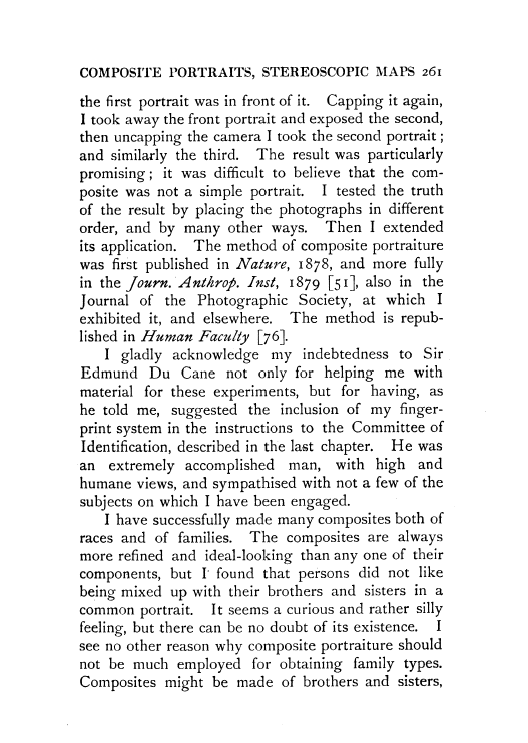COMPOSITE PORTRAITS, STEREOSCOPIC MAPS 261
the first portrait was in front of it. Capping it again, I took away the front portrait and exposed the second, then uncapping the camera I took the second portrait ; and similarly the third. The result was particularly promising ; it was difficult to believe that the composite was not a simple portrait. I tested the truth of the result by placing the photographs in different order, and by many other ways. Then I extended its application. The method of composite portraiture was first published in Nature, 1878, and more fully in the Journ. Anthrop. Inst, 1879 [51], also in the Journal of the Photographic Society, at which I exhibited it, and elsewhere. The method is republished in Human Facully [76].
I gladly acknowledge my indebtedness to Sir Edmund Du Cane not only for helping me with material for these experiments, but for having, as he told me, suggested the inclusion of my fingerprint system in the instructions to the Committee of Identification, described in the last chapter. He was an extremely accomplished man, with high and humane views, and sympathised with not a few of the subjects on which I have been engaged.
I have successfully made many composites both of races and of families. The composites are always more refined and ideal-looking than any one of their components, but I- found that persons did not like being mixed up with their brothers and sisters in a common portrait. It seems a curious and rather silly feeling, but there can be no doubt of its existence. I see no other reason why composite portraiture should not be much employed for obtaining family types. Composites might be made of brothers and sisters,

